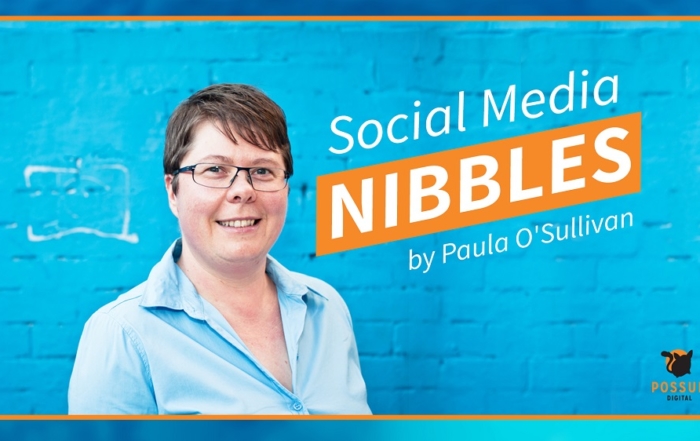
Nov 5, 2018 | Blog, News, Social media strategy
Do you have a LinkedIn profile? If you’re a business professional, chances are you’re on LinkedIn. It’s the perfect platform for meeting new business connections, link up with people in complimentary industries and share knowledge with those inside your own. And as of Oct 2018 there are almost 4.5 million active daily users on LinkedIn in Australia.
Your LinkedIn profile – First impressions count
Just like a resume or business card, your LinkedIn profile will be the first thing people see about you. Also, how well you fill out your details, as well as other factors like the number of connections, will determine how well you are found in search results on the platform.
Treat your profile like it is a part of your business. Invest time in improving it and constantly attend to it by updating your status and sharing information. More importantly make sure that your profile is a reflection of how you wish to present you and your brand.
Quick tips to improve your profile
Want to optimise your profile for success? Here are my top 10 tips:
- Upload a profile picture. Make sure it’s professional and not a photo you took on your last holiday – that might work for a travel agent, but not for most industries. You’re on LinkedIn to make business connections not friends.
- Write a clear description of what you do in your ‘Professional Headline’. Don’t make it too long and make sure you have important related keywords.
- Make sure you include yourself in the correct industry so that people can find you.
- Grab you unique URL. It gives you a shortened link to share with business contacts and it’s easy to remember.
- In the ‘Summary’ section include important relevant keywords and when drafting this section, have someone read it before you upload. If you need to, employ a copywriter to do this for you.
- Include relevant work experience that demonstrates your skills and talents.
- Don’t be afraid to ask for recommendations and endorsements – they help you rank higher in search results!
- Include all of your skills. You may want to only add a few at a time.
- If you have written a published article or another publication, be sure to include this in the “Publications’ section. This will give you credibility.
- Add you Twitter handle and website!
Over to you!
What other tips and tricks have you used to get the most out of your LinkedIn profile? You can also connect with me on LinkedIn here.
If you want help getting more out of your social media marketing, please download our free step by step guide today!

Oct 29, 2018 | Blog, Social media strategy
A Business of One Should Still do Marketing
We hear, especially from Solopreneurs and small businesses, time and time again “Why should my business use social media?” The answer is surprisingly simple – Because it Works.
Australians love social media, with 65% of Australians using social media and 95% of those using Facebook it is an excellent way to access your audience who spend up to 7 hours a week on social media. IN addition, many businesses right across Australia identify social media as a growing channel for their marketing.
The benefits of using social media are many and varied, it can:
- Reduce your overall Marketing costs, that’s a win.
- Increase traffic to your awesome website, again a win!
- Increase your brand awareness, win/win.
- Help you talk directly to your customers – WIN!
- Help with retention long after the purchase has occurred – DOUBLE WIN!
Isn’t social media free? Yes it is, for solopreneurs and businesses, but you need to factor in things like your time when including this in your budget because social media needs to be daily monitored to ensure customers’ needs are attended to and questions answered.
 When determining your social media marketing plan, first you need to identify the 3 M’s of Marketing – Message (What) Market (Who) Medium (How).
When determining your social media marketing plan, first you need to identify the 3 M’s of Marketing – Message (What) Market (Who) Medium (How).
Key questions to think about when determining your 3M’s are:
Why are you different? What problem do you fix? Why are you different? What’s in it for them? What message resonates? How many updates per week? What other tactics will you use? How will you measure success?
Once you have determined the 3M’s you can execute your plan in only 15 minutes per week, you need to put time aside to:
- Post content
- Engage with your community
- Follow Influencers
- Nurture your own community
- Measure your activity
Here’s a quick reference for your daily and weekly social media needs:
Sunday night
Write and schedule your updates for the week (minimum 2), find 3 – 5 people/organisations to follow and look at your metrics for the previous week and adjust your plans where needed.
Each morning
Quickly scan for any breaking news that is relevant (post it if there is), comment on a couple of posts from connections made, follow accounts of new clients and new networking connections and send personal messages to a few connections.
Other key questions to consider when setting up: How will you promote your social media? Are there any risks to consider? Who are your likely customers? Who your customers’ friends? And if you are one of the many solopreneurs out there, how will you manage your time and resources?
One last thing, stay relevant with your content, think to yourself “Is this important and necessary for the customer to hear” each time you post.

Sep 10, 2018 | Blog, News
Creating a Content Calendar for your Social Media
Keeping your audience engaged, and with relevant content, is one the most important facets of your social media strategy. But how do you find good content and not only that; how do you organise it and deliver it you your audience without repeating yourself, your message, or tying yourself in a knot of dis-organisation. The answer is simple – use a content calendar!
First step – Your Messaging
Well first, and the most important point, is to know the messaging you want delivered to your audience (this is relevant later on when we talk about sourcing your content). Just below this, in importance, is not becoming repetitive with your messaging and your content. I can’t stress how valuable this is, repetition shows a lack of imagination and your audience will take that personally.
Your messaging can be simple, and really needs to speak to your target audience. I’ll look at messaging in a separate post!
Then comes your content calendar
The best way to tackle this is to design a monthly content calendar. This is a simple excel sheet with each week (Week Beginning 7th November) on the left horizontal line and the post days (Mon, Wed, Fri) on the vertical. A monthly content calendar allows you plainly see the pattern of your content, it doesn’t have to be too descriptive, and sometimes a simple word will suffice ie: Call to Action or Strategy. Doing this prior to the start of each month will actually make your content work easier as you know exactly what content (and its associated messaging) to look for. If you are planning content for more than one social media platform be sure to separate them on the spreadsheet (look for nuances in the different messaging each audience needs for each platform.)
Once this monthly calendar is done you work week to week on your content (due to current affairs/news and important announcements which may be pertinent to your brand.) The weekly content schedule is in a separate excel document using the ideas and trigger words from the monthly content calendar. Based on your previous knowledge of the activity of your audience (if on Facebook check your Insights) you make a decision on the times on each day for each post to be scheduled. If you are determining content for more than one social media platform again be sure to keep them separated but on the same excel document.
Where do you find content to share?
So now you have two beautiful excel sheets, your monthly content calendar is filled with awesome content ideas and trigger words like: Call to Action, Ted Talk, #ShareaSelfie, #ICYMI which is In Case You Missed It, always great for an important article. Also #ThrowBackThursday (#TBT), Engaging piece on travel or Photo Montage. However your weekly content schedule is empty; so where do you go to find your content? As mentioned earlier you need to have a clear idea on the messaging you want your audience to receive. So where do you look? The simple answer is: everywhere and on the same token the complex answer is: everywhere. The internet is jam packed full of content which can make it a minefield to navigate so follow the KISS rule: Keep It Simple Stupid.
Know who the experts are in your chosen industry, make sure you follow them and like their page, share content from their social media platform and be sure to tag them when you do it as it increases your reach and brings your brand to THEIR attention. Identify the influencers in your field, which are different from experts, and do the same. Video content is always great so check out Ted Talks for something relevant for your industry. Google, though huge, is a great content source, especially if you use the “news” function of the search engine to find the most updated news on the subject you’re writing about. Source great bloggers and share their content, start your own blog and share your own content. Content can literally come from anywhere, including Live feeds such as the Facebook video tool, just be sure to keep it simple, engaging and relevant to your brand.
Over to you
How do you plan your content? Will you use a content plan to help you in the coming year?
If you want help getting more out of your social media marketing, please download our free step by step guide today!

Aug 20, 2018 | Blog, News, Social media strategy
Social media content: How do you keep it flowing?
What do I say? (a.k.a I need help with content!)
If there is one theme from businesses I hear time and time again when it comes to social media is “Yes I do know I need to use it but I don’t know what to say”. They have a Facebook page, and maybe a Twitter account, and happily follow others. But when it comes to posting their own content, there’s a huge blank.
Is this you? Have you set up a Facebook page or Twitter account, updated it every day (and sometimes more than once!) then after a month or so you couldn’t think of what else to put up on your page? Perhaps you set up a LinkedIn profile, added everyone you know, posted some really interesting content, then lost motivation?
I can assure you – you’re not alone.
The 80 / 20 rule
If there is one thing you take away from this article, is that you do not need to write every piece of content from scratch. In fact, it’s better if you don’t; that way if you are curating interesting content that your audience engages with, then you’ll be seen as a trusted source.
Ideally, your content should consist of 80 per cent ‘value’ based or educational content. This can be either curated (ie, sourced elsewhere with appropriate attribution) or created yourself. The remainder 20 per cent can be slightly more ‘salesy’ but still be respectful of your audience.
Think curation and creation!
So how do you consistently come up with interesting and engaging content without spending hours trawling through the internet and coming up with nothing? Here are my top 5 tips:
- Identify leaders in your industry and share what they say. Sign up for their email newsletters and when a great article arrives in you inbox, share it with your fans!
- When reading online newspapers and other news sites, if you come across an article you think might interest you followers, save it in a word document so you can use it later
- Look at what you are doing in your work place right now. Is there an interesting project you are working on? A client who you could profile?
- Have you made a mistake and learned a lesson in your workplace that you think your fans could benefit from? Hindsight is a wonderful thing (especially in business) and another business could learn from you.
- Ask you fans, followers & clients what they would like to hear. Your fans are a rich source of information, so ask them lots of questions!
Over to you!
Are there other places you find inspiration?
If you want help getting more out of your social media marketing, please download our free step by step guide today!

Jul 24, 2018 | Blog, News
Social Media Nibbles E07: Picking an audience for your next Facebook Ad
Hello and welcome to Social Media Nibbles. I’m Paula O’Sullivan, social media strategist and head possum at Possum Digital. In this episode we’re going to be looking at how to choose an audience to target for your Facebook advertising.
Now during 2018, Facebook has undergone wholesale changes to its platform including the Ads Manager. We know that organic reach is down and we know that there’s been significant changes to the terms of service which have resulted in things like tightening up on the use of email lists and increased ad content reviewing, but just like any good marketing plan, you need to be flexible to changing outside circumstances.
If you haven’t before, you may want to consider investing some budget in Facebook advertising. If you’ve had less than ideal results in the past, one of the factors might be the biggest challenge of knowing who to actually target and how to find them. With 15 million monthly active users on Facebook in Australia, there’s a huge pool of potential customers, so you can waste a lot of money really fast, but if you have a limited budget you need to be laser focused on how you spend your advertising dollars.
Before you start any more ad campaigns you need to look at who you actually want to target and how you do that.
The type of audience you’ll need will be based on your own circumstances but the more you test and measure the better your targeting will be.
Before you start any advertising, if you haven’t already, make sure you get a Facebook pixel from your account and place it on your website. If you don’t have a pixel, in my view, don’t even bother advertising as you’re wasting a lot of money and effort. Any good web developer, or you can find a good YouTube instructional video, can help you.
Now let’s look at the types of audience targeting options available to you.
The first is what Facebook calls Core Audiences.
This type of targeting allows you to select your audience through personal and behavioural characteristics so you can target things like demographic, that would be age, gender, work, relationship status. Location, now this is especially useful if you have a shopfront or if you only want to target people in a specific geographical area. Interests, which include the types of pages liked, the kind of content posted, engaged with, hobbies, places people have checked into and how people generally like to be entertained.
As you would all know out there, every time you do something on the internet or within Facebook, it actually drops a little bit of data into your Facebook profile and that’s how Facebook gathers information about you.
Facebook has removed access to third party data and some interests have been removed, so while this is a good way to start if you’ve never advertised before, you don’t actually want to rely on this type of audience for your long-term advertising strategy.
The second type of audience is a custom audience.
The great news is that you can target people who are on your email list or have visited your website or even engaged with your Facebook page or content on your page.
Now this type of targeting is my personal favourite, as you are using your own data to create Facebook advertising campaigns.
Creating a custom audience from your email list is actually relatively easy. You simply upload your list in a TXT format and Facebook will do the rest. What you may want to think about before uploading your list is segmenting your list into categories like repeat customers, leads that haven’t purchased and so on and so forth.
This helps you refine your targeting even further and will help with lookalike audiences, which I’ll talk about in a minute. Know that from now any list you upload, you will need to let Facebook know if you collected the data directly from your customers or did the data come from an external source and you will need to remove email addresses from anyone who opts out of your email list.
For website traffic, you can use your Facebook pixel to create an audience of people who do things like visit a specific page on your website, go to your lead capture page but don’t actually put in their details or sign up or they fill a cart and then abandon that cart.
If you are using website traffic as a basis for your custom audience, you will need to drive traffic so that the pixel can collect data. If you’ve never had a pixel on your site before, when you place the pixel on your site I like to make sure that I’m driving really good traffic from a variety of sources and I’m doing that for at least two to four weeks before serving ads.
Again, the more defined your audience is, the better you can target your message.
A great feature I’ve been using is creating audiences based on who engages with your Facebook page or content.
One strategy that warms up an audience is serving an ad to a cold audience with just a video, nothing else, and a little bit of text at the top. Then see who watches it for more than 10 seconds and then this group actually becomes your custom audience. You’ve gone to a cold audience, you’ve given them a video, a bit of educational content and if you think 10 seconds isn’t a long time, sit down and actually count that out. Then once you’ve created a new audience of these people who have watched your video for more than 10 seconds, you can serve them a second ad with another call to action.
Now the third type of audience is a lookalike audience. Facebook can help you find other users who look like your custom audience. All you need to do is to create your custom audience then ask Facebook to create a lookalike audience for you.
Say for example you upload an email list of people who have purchased a product from you. Then what you’re telling Facebook to do is to say, can you please go and find me more people like this? Facebook will find anyone it thinks actually looks like and will behave like the people who have already purchased from you.
Importantly, the quality of the lookalike audience is going to depend on the quality of your original data and how you have set up your custom audiences. The more specific data that you can give Facebook, the better the lookalike audience outcome will be.
Before you set up your next Facebook ad campaign, have a plan for who you are going to target and what type of audience you need to reach them.
Thank you for listening and if you liked what you heard in this podcast, please subscribe and share it with your friends. Make sure to visit our website possumdigital.com.au, where you can listen to more podcast episodes just like this one and read our latest blogs.


 When determining your social media marketing plan, first you need to identify the 3 M’s of Marketing – Message (What) Market (Who) Medium (How).
When determining your social media marketing plan, first you need to identify the 3 M’s of Marketing – Message (What) Market (Who) Medium (How).

